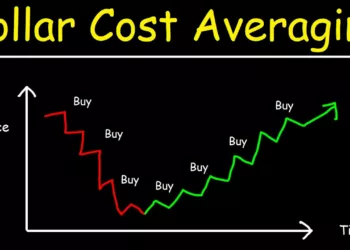Understanding the Concept of Short Selling
Short selling is a controversial yet potentially lucrative trading strategy that allows investors to profit from declining asset prices. While traditional investing follows the mantra “buy low, sell high,” short selling flips this concept on its head, operating on the principle of “sell high, buy low.” This advanced trading technique has been both praised for its ability to generate profits in bearish markets and criticized for its potential to exacerbate market downturns.
In this comprehensive guide, we’ll delve deep into the world of short selling, exploring its mechanics, benefits, risks, and strategies for success. Whether you’re a seasoned investor looking to diversify your trading toolkit or a curious newcomer eager to understand this complex financial maneuver, this post will equip you with the knowledge needed to navigate the challenging terrain of short selling.
What is Short Selling?
At its core, short selling is a trading strategy where an investor borrows shares of a stock or other asset from a broker and immediately sells them on the open market. The investor’s goal is to buy back the shares at a lower price in the future, return them to the lender, and pocket the difference as profit.
Here’s a simple step-by-step breakdown of how short selling works:
- Borrow shares: The investor borrows shares from a broker.
- Sell borrowed shares: These borrowed shares are sold immediately at the current market price.
- Wait for price to fall: The investor hopes the price of the asset will decline.
- Buy back shares: If the price falls, the investor buys back the shares at the lower price.
- Return shares and profit: The borrowed shares are returned to the broker, and the investor keeps the difference as profit.
It’s important to note that if the price of the asset rises instead of falls, the short seller will incur a loss when buying back the shares at a higher price.
The History and Evolution of Short Selling
Short selling has a long and contentious history in financial markets. Its origins can be traced back to the early 17th century in the Netherlands, where it was first practiced in the Dutch East India Company’s stock.
“He who sells what isn’t his’n, must buy it back or go to pris’n.” – Daniel Drew, 19th-century American financier
This old Wall Street adage humorously captures the essence and risk of short selling. Throughout history, short selling has been alternately banned and allowed, often in response to financial crises or market manipulation concerns.
Some key milestones in the history of short selling include:
- 1609: First recorded short sale by Dutch trader Isaac Le Maire
- 1733: Ban on short selling in England following the South Sea Bubble
- 1929: Short selling blamed for exacerbating the Great Depression
- 1938: U.S. Securities and Exchange Commission (SEC) implements the uptick rule to restrict short selling
- 2007: SEC eliminates the uptick rule
- 2008: Temporary ban on short selling financial stocks during the Global Financial Crisis
- 2010: SEC introduces alternative uptick rule (Rule 201) to restrict short selling under certain conditions
Today, short selling remains a controversial but integral part of modern financial markets, providing liquidity and price discovery while also serving as a tool for risk management and speculation.
The Mechanics of Short Selling
To truly understand short selling, it’s crucial to dive deeper into its mechanics. Let’s break down the process into more detail:
1. Locating Shares to Borrow
Before initiating a short sale, an investor must first locate shares to borrow. This is typically done through a broker who has access to a pool of lendable shares. These shares often come from:
- The broker’s own inventory
- Shares held in margin accounts of other clients
- Shares borrowed from other brokers or institutions
The availability and cost of borrowing shares can vary significantly depending on the stock’s popularity and the overall market conditions.
2. Placing the Short Sell Order
Once shares are located, the investor places a short sell order with their broker. This order is similar to a regular sell order, but it’s marked as a short sale. The broker then sells the borrowed shares on the open market.
3. Margin Requirements and Interest
Short selling typically requires a margin account. The investor must maintain a certain amount of equity in the account as collateral, known as the maintenance margin. This helps protect the broker against potential losses if the trade moves against the short seller.
Additionally, the short seller must pay interest on the borrowed shares. The interest rate, known as the short interest, can vary depending on the stock’s availability and demand for shorting.
4. Dividends and Other Payments
If the shorted stock pays a dividend while the short position is open, the short seller is responsible for paying the dividend to the share lender. This is an additional cost that must be factored into the profitability of the trade.
5. Buying Back the Shares (Covering the Short)
To close out a short position, the investor must buy back the same number of shares they initially borrowed and sold. This is known as “covering” the short. If the stock price has fallen, the investor can buy back the shares at a lower price and profit from the difference.
6. Potential for Unlimited Losses
One of the most significant risks of short selling is the potential for unlimited losses. While the maximum profit is limited (the stock can only go to zero), there’s theoretically no limit to how high a stock’s price can rise, leading to potentially catastrophic losses for short sellers.
The Benefits of Short Selling
Despite its risks, short selling offers several benefits to both individual traders and the broader market:
- Profit in Declining Markets: Short selling allows investors to profit from falling asset prices, providing opportunities even in bearish market conditions.
- Portfolio Hedging: Short positions can be used to hedge long positions, helping to protect a portfolio against market downturns.
- Market Efficiency: Short sellers often conduct extensive research to identify overvalued companies, contributing to more efficient price discovery in the market.
- Liquidity: Short selling can increase market liquidity by providing additional sell orders, potentially reducing bid-ask spreads.
- Fraud Detection: Short sellers have historically played a role in uncovering fraudulent activities within companies, as they have a strong incentive to identify overvalued or misrepresented stocks.
The Risks and Challenges of Short Selling
While short selling can be profitable, it comes with significant risks and challenges:
- Unlimited Loss Potential: As mentioned earlier, there’s no theoretical limit to how high a stock’s price can rise, leading to potentially unlimited losses for short sellers.
- Margin Calls: If a shorted stock rises significantly, the broker may issue a margin call, requiring the investor to deposit additional funds or close out the position.
- Short Squeeze: When a heavily shorted stock starts to rise, short sellers may rush to cover their positions, further driving up the price in a phenomenon known as a “short squeeze.”
- Regulatory Risks: Short selling is subject to various regulations, which can change over time and impact the viability of short selling strategies.
- Borrowing Costs: The costs associated with borrowing shares, including interest and potential dividend payments, can eat into profits or exacerbate losses.
- Timing Challenges: Accurately timing both the entry and exit of a short position can be extremely difficult, even for experienced traders.
Short Selling Strategies
Successful short selling requires careful analysis and risk management. Here are some common strategies employed by short sellers:
1. Fundamental Analysis
Short sellers often use fundamental analysis to identify overvalued companies. This involves examining financial statements, industry trends, and economic factors to determine if a stock’s price is justified by its underlying business fundamentals.
Key metrics to consider:
- Price-to-Earnings (P/E) Ratio
- Price-to-Book (P/B) Ratio
- Debt-to-Equity Ratio
- Cash Flow Analysis
- Revenue and Earnings Growth Trends
2. Technical Analysis
Technical analysis involves studying price charts and using various indicators to identify potential short-selling opportunities. Some popular technical indicators used by short sellers include:
- Moving Averages
- Relative Strength Index (RSI)
- Moving Average Convergence Divergence (MACD)
- Bollinger Bands
3. Event-Driven Short Selling
This strategy involves shorting stocks based on specific events or catalysts that may negatively impact the company’s value. Examples include:
- Earnings announcements
- Regulatory changes
- Legal issues
- Management changes
- Industry disruptions
4. Pair Trading
Pair trading is a market-neutral strategy where an investor goes long on one stock and short on a related stock, typically within the same industry. The goal is to profit from the relative performance difference between the two stocks, regardless of overall market direction.
5. Short-Term Momentum Trading
Some traders focus on short-term price movements, attempting to profit from downward momentum in stock prices. This strategy often involves high-frequency trading and requires close monitoring of market conditions.
Tools and Indicators for Short Selling
To effectively implement short selling strategies, traders often rely on various tools and indicators. Here’s a table summarizing some popular ones:
| Tool/Indicator | Description | Use in Short Selling |
|---|---|---|
| Short Interest Ratio | Measures the number of shorted shares divided by average daily trading volume | High ratios may indicate increased short selling activity |
| Days to Cover | Estimates how many days it would take short sellers to cover their positions | Higher values suggest increased potential for a short squeeze |
| Put/Call Ratio | Compares the trading volume of put options to call options | High ratios may indicate bearish sentiment |
| VIX (Volatility Index) | Measures market expectations of future volatility | High VIX values often coincide with market fear and potential shorting opportunities |
| Moving Averages | Shows average price over a specific time period | Stocks trading below key moving averages may be candidates for shorting |
Case Studies: Successful and Disastrous Short Sells
To illustrate the potential rewards and risks of short selling, let’s examine two real-world examples:
Successful Short: Enron Corporation (2001)
Background: Enron was an energy company that used fraudulent accounting practices to hide billions in debt and inflate its profits.
Short Seller: Jim Chanos of Kynikos Associates
Outcome: Chanos began shorting Enron in late 2000 after identifying red flags in the company’s financial statements. When Enron’s fraud was exposed in 2001, its stock price plummeted from over $90 to less than $1, resulting in massive profits for short sellers.
Key Takeaway: Thorough fundamental analysis and a willingness to question prevailing market sentiment can lead to successful short selling opportunities.
Disastrous Short: Tesla, Inc. (2020)
Background: Tesla, the electric vehicle and clean energy company, has been a popular target for short sellers due to its high valuation and volatile stock price.
Short Sellers: Various hedge funds and individual investors
Outcome: In 2020, Tesla’s stock price surged over 700%, causing estimated losses of $38 billion for short sellers. This dramatic rise led to a massive short squeeze, forcing many short sellers to close their positions at significant losses.
Key Takeaway: Shorting popular, high-growth companies can be extremely risky, especially in the face of strong market sentiment and momentum.
Regulatory Landscape and Short Selling Restrictions
Short selling is subject to various regulations designed to prevent market manipulation and excessive downward pressure on stock prices. Some key regulations include:
- Regulation SHO: Implemented by the SEC in 2005, this regulation aims to reduce naked short selling and failure to deliver.
- Alternative Uptick Rule (Rule 201): Restricts short selling when a stock has dropped more than 10% in one day.
- Short Sale Reporting: Many jurisdictions require the reporting of significant short positions to regulators.
- Circuit Breakers: Trading halts triggered by rapid price declines, which can affect short selling activities.
- Borrowing Requirements: Regulations often require that short sellers locate or have a reasonable belief that they can borrow the shares before shorting.
It’s crucial for short sellers to stay informed about these regulations and any changes that may affect their trading strategies.
Ethical Considerations in Short Selling
Short selling has long been a subject of ethical debate in the financial world. Critics argue that it can exacerbate market declines and potentially harm companies and their employees. Proponents, however, maintain that short selling plays a vital role in market efficiency and fraud detection.
Some ethical considerations include:
- Market Impact: Does aggressive short selling unfairly drive down stock prices?
- Information Asymmetry: Do short sellers have an unfair advantage due to superior research or insider information?
- Corporate Harm: Can short selling campaigns damage otherwise healthy companies?
- Social Responsibility: Should investors consider the broader economic impact of their short selling activities?
“Short sellers are the professional skeptics who look past the hype to gauge the true value of a stock.” – James Chanos, renowned short seller
While these debates continue, it’s important for short sellers to consider the ethical implications of their actions and operate within both legal and ethical boundaries.
Tips for Successful Short Selling
If you’re considering incorporating short selling into your investment strategy, here are some tips to help improve your chances of success:
- Do Your Research: Thoroughly analyze potential short targets using both fundamental and technical analysis.
- Manage Risk: Use stop-loss orders and carefully monitor your positions to limit potential losses.
- Be Aware of Borrowing Costs: Factor in the costs of borrowing shares and potential dividend payments when assessing trade profitability.
- Watch for Short Squeezes: Be cautious of heavily shorted stocks that could experience rapid price increases.
- Diversify: Don’t concentrate your portfolio in too few short positions.
- Stay Informed: Keep up with market news, company events, and regulatory changes that could affect your short positions.
- Practice with Paper Trading: Before risking real money, practice short selling strategies using a paper trading account.
- Be Patient: Don’t force trades. Wait for high-conviction opportunities that align with your analysis and risk tolerance.
- Understand the Psychology: Short selling can be emotionally challenging. Develop the mental fortitude to stick to your strategy in the face of market volatility.
- Continual Learning: The markets are always evolving. Commit to ongoing education and refinement of your short selling strategies.
Is Short Selling Right for You?
Short selling is a powerful but complex trading strategy that offers the potential for profits in declining markets. However, it comes with significant risks and challenges that make it unsuitable for many investors, particularly beginners.
Before engaging in short selling, carefully consider your financial goals, risk tolerance, and level of market expertise. If you decide to incorporate short selling into your investment strategy, start small, continue learning, and always prioritize risk management.
Remember, successful short selling requires a combination of thorough research, disciplined execution, and the ability to navigate both financial and regulatory complexities. Whether you choose to engage in short selling or not, understanding this strategy can provide valuable insights into market dynamics and help you become a more well-rounded investor.
For those interested in learning more about short selling and advanced trading strategies, consider exploring resources from reputable financial education providers such as Investopedia or The CFA Institute. Additionally, staying informed through financial news sources like Bloomberg or The Wall Street Journal can help you keep abreast of market trends and potential short selling opportunities.
As with any investment strategy, it’s advisable to consult with a qualified financial advisor before incorporating short selling into your portfolio. They can help you assess whether this strategy aligns with your overall financial plan and risk profile.
Disclaimer: The information provided in this blog post is for educational purposes only and should not be considered financial advice. Short selling is a complex and high-risk trading strategy that may not be suitable for all investors. The author and publisher are not registered investment advisors and do not provide personalized investment recommendations. Engaging in short selling carries significant risks, including the potential for unlimited losses. Before considering any investment strategy, including short selling, readers should conduct their own research, consider their individual financial situation, and consult with a qualified financial advisor. Past performance is not indicative of future results. The examples and case studies presented in this article are for illustrative purposes only and do not guarantee similar outcomes in future trading activities. Trading in financial markets involves substantial risk of loss and is not suitable for all investors. Never invest money that you cannot afford to lose. Always be aware of and comply with all applicable local and national regulations regarding trading and investment activities. The author and publisher disclaim any liability, loss, or risk incurred as a consequence, directly or indirectly, from the use and application of any of the contents of this blog post.

















































